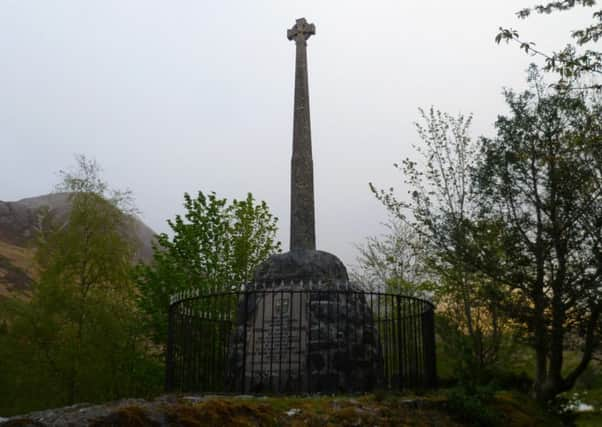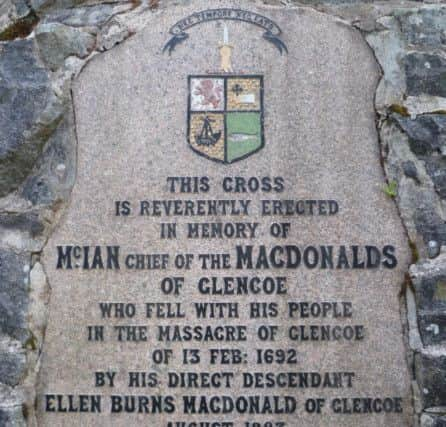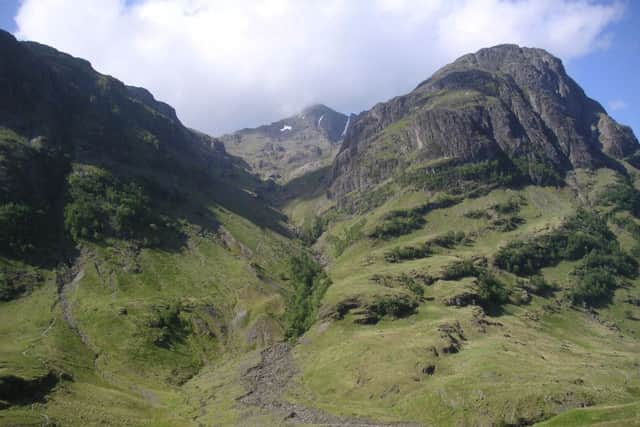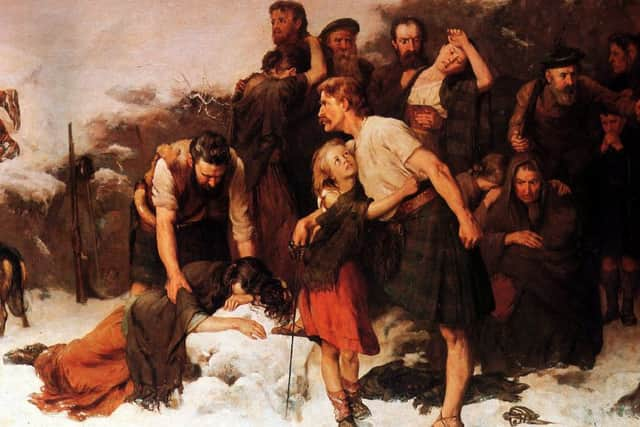Looking back: The massacre of Glencoe


ON 13 February 1692, the Clan MacDonald of Glencoe were slaughtered while they slept by Captain Robert Campbell and his men. The day is imprinted in Scottish history, not only because of the number of people who lost their lives, but because the men had enjoyed their victims hospitality in the days leading up to the massacre. Glencoe had been home to the MacDonald clan (or MacIains as they were more specifically known) since the early 14th century when they had supported King Robert the Bruce.
John Prebble, author of Glencoe: The Story of the Massacre believes the events can be understood only within a knowledge of the Highlander’s resistance to an alien southern government.
Advertisement
Hide AdAdvertisement
Hide AdHe writes: “The Highland people were once the majority of Scotland’s population, a military society that had largely helped to establish and maintain her monarchy. This society, tribal and feudal, could not change itself to meet a changing world, nor did it wish to”


Highlanders were regarded by Lowlanders as an obstacle in the way of the complete political union between England and Scotland. Many believed that their independence of spirit had to be broken.
Most importantly, Clan MacDonald was not in agreement with Clan Campbell over their growing support of the government.
The MacDonalds of Glencoe were victims of what Highlanders called Mi-run mor nan Gall, the Lowlanders great hatred. The two clans previously had troubled encounters as the MacDonalds were routinely involved in trouble with the law and neighbouring clans - one of which were the Campbells.
At the time, many Highland clans posed a possible threat to the new regime in London under King William of Orange. To secure support, it was ordered that chiefs must sign an oath of allegiance to King William by January 1st 1692 or the clans would be punished with the “utmost extremity of the law”.


Some clans were already bound by another oath to James Stuart, the deposed King in France - an oath that they weren’t released from until December 28th, a few days before the cut off point for the King William ultimatum.
Secretary of State John Dalrymple, Master of Stair, who was a Lowlander and a Protestant, used the predicament to serve his own political ends. He viewed Highlanders as a hindrance to Scotland and went against their whole way of life. His dislike for the MacDonalds of Glencoe was particularly strong.
Advertisement
Hide AdAdvertisement
Hide AdThe MacDonald clan eventually took their oath to Fort William but were told on arrival that he would have to travel some 70 miles to see a sheriff at Inveraray, in Argyll. Due to bad weather and misdirection, chieftain MacIan arrived after the deadline and as a result the oath wasn’t accepted by John Dalrymple and the orders were given to for the MacDonalds to be slaughtered and “cut off root and branch”.


Three commanders - two from the Campbell-dominated Argyll regiment and one from Fort William - were expected to carry out the orders however two companies of soldiers never arrived due to bad weather. Some historians believe this was a deliberate act of defiance to avoid being involved in the atrocity.
The clans lived together for 12 days before the slaughtering took place. Before then they had shared homes and enjoyed each other’s hospitality.
On February 13th, the massacre took place and left 38 clan members dead. Some managed to escape into the mountains but subsequently succumbed to the bad weather while others were alerted to the coming events by merciful Campbells and managed to gather belongings to protect them from the cold and flee their homes.
The events shocked the country and became a powerful piece of anti-government propaganda for the Jacobites in Edinburgh. In 1695, it was noted that others who had been late in taking the oath had been excused and that King William had demanded that the MacDonalds be “extirpated”, a request that had been taken too far by John Dalrymple. Despite his clear act of inhumanity, he resigned and was later forgotten by government and never brought to trial.


Texts published since the massacre have argued that the Campbells can’t be held wholly responsible for the tragedy as the officer in charge was following orders which had to be obeyed for risk of death. However, to this day ‘No Campbells’ signs can be found in the Highlands.